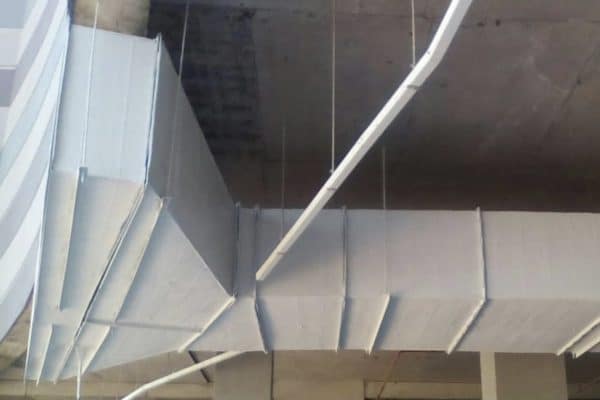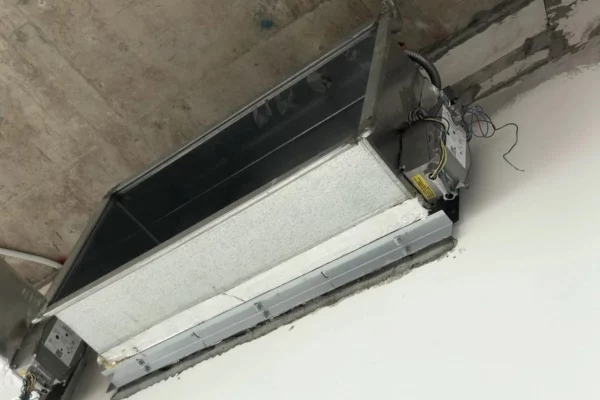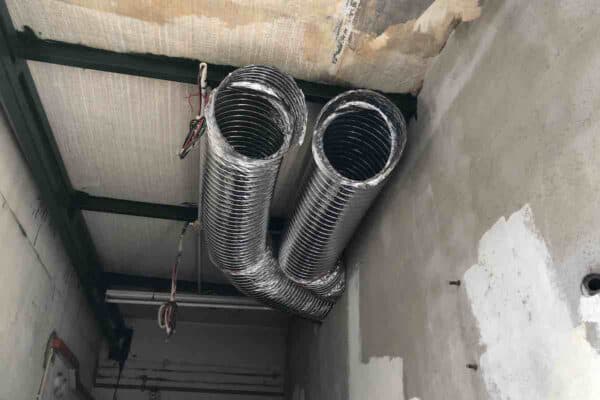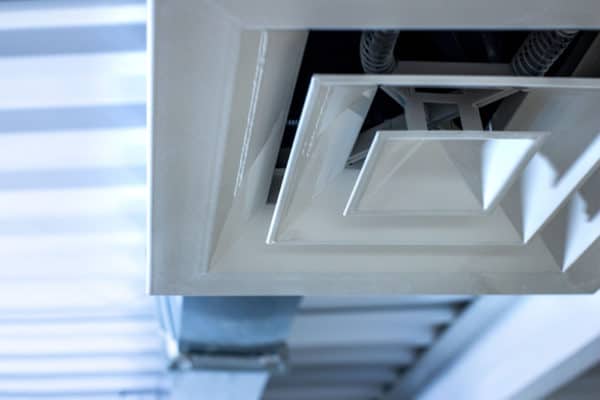Why HVAC Air Vents are Noisy and How to Fix Them?
A properly designed HVAC system should not produce unpleasant noise. Usually, problems such as rattling and whistling noise are not a big deal. People are seriously frustrated with a really loud air vent noise. So, why HVAC air vents are noisy and how you can fix them?
The two most common causes of loud HVAC air vent noise are high air velocity and too short of a return air duct. High air velocity is caused by too small of a duct and a short return air duct will lead to effective transmission of loud fan noise through the return air duct.
Many people struggle to find a true solution for their noisy vents. Dirty filters, clogged vents, closed dampers and loosen ducts are often not the root cause of the problem.
Why HVAC Air Vents are Noisy?
Rattling and whistling noise can be fixed relatively easily. However, if your vents are making a very loud noise, fixing them requires you to understand the fundamentals behind them.
Root Cause One: High Air Velocity
If the air coming out of your vents is too fast, it can create a loud noise.
In HVAC, we usually design the face velocity of vents (supply and return) to be around 500 FPM (feet per minute) or 2.5 m/s (meter per second). So, the air vent does not produce unpleasant noise.
Face velocity is the air velocity at the face of the vent.
To see the relationship between air velocity and noise, we must refer to the performance data of the vent from the manufacturer. If you’re not sure what the performance datasheet looks like, the following is an example:
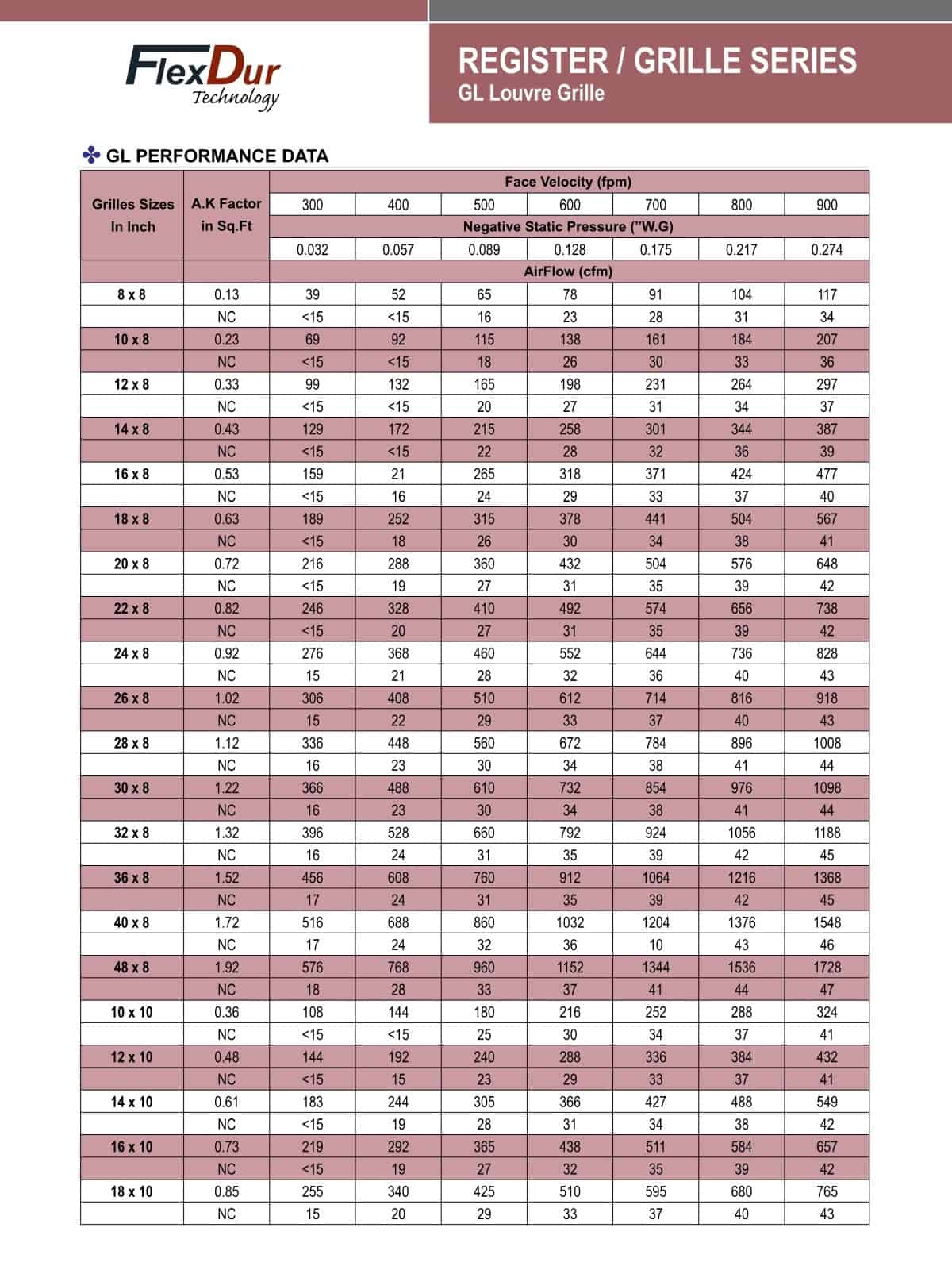
This performance data is from FlexDur Malaysia. A good vent should have performance data close to something like this. So, this is a good reference for you. To download the full PDF, visit FlexDur.
Now, let’s take a closer look:
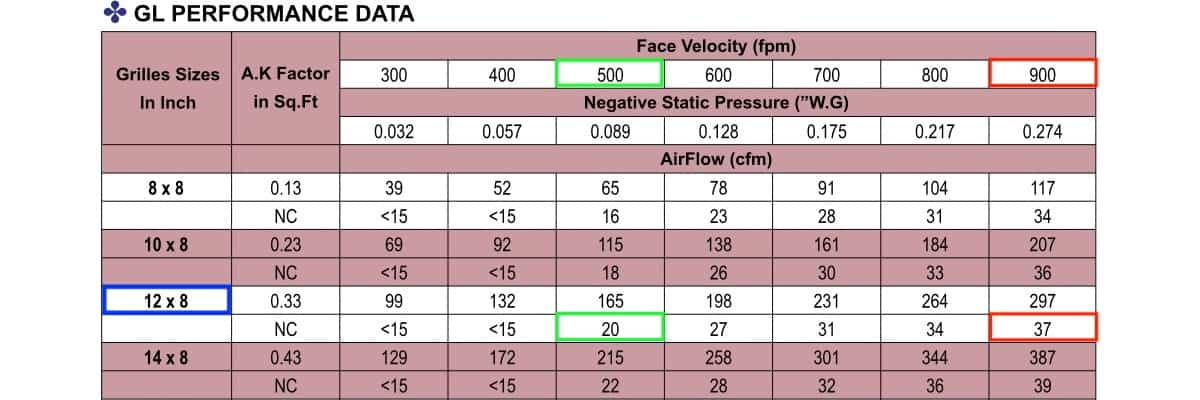
From the above, a 12×8″ (300x200mm) vent, at 500 FPM, the noise criterion (NC) is 20. NC20 is equivalent to about 25 dB which is almost inaudible.
However, if the same vent has an air velocity of 900 FPM, the noise level is NC37 or roughly 42 dB. This level of noise may sound like your fridge or dishwasher.
Let’s say you have a 48×24″ (1200x600mm) return air vent. At 500 FPM and 900 FPM, the noise level is NC40 (45 dB) and NC54 (60 dB) respectively.
Here is what a noise level of 60 dB sounds like:
As you can see, the higher the air velocity, the noisier the vent. To reduce vent noise, we must reduce the face velocity or the velocity of the air coming out of the vent.
Root Cause Two: Short Return Air Duct
When you have a short return air duct, the noise produced by the fan will be transmitted out effectively. Hence, you’ll hear a loud noise coming out of the vent.
HVAC units with a short return air duct are not uncommon. However, we need to treat the return air duct in order to suppress the noise transmission.
How to Fix Noisy HVAC Air Vents?
If your vents create minor noise, you can fix it relatively easily and there are many resources on the internet. However, if your vent is producing loud noise, you may need a professional to help. But, you can first understand how to fix a noisy vent.
Solution One: Install a Plenum Box
If you suspect the face velocity of the vent is too high, you can install a plenum box to slow it down thereby reducing the noise.
See my post 4 Types of HVAC Plenums (Basics & Applications) to learn more about HVAC plenum boxes. Your plenum box should be either the supply air plenum or return air plenum mentioned in the post.
Usually, HVAC ducts are sized based on around 1000 FPM of air velocity. Without a plenum box, the air velocity is simply too high for a vent.
Generally, the size of a plenum box should match the size of the vent. Furthermore, the depth of the plenum box should be around 4″ to 6″ depending on the size of the vent. The location of the plenum box should be right behind the vent.
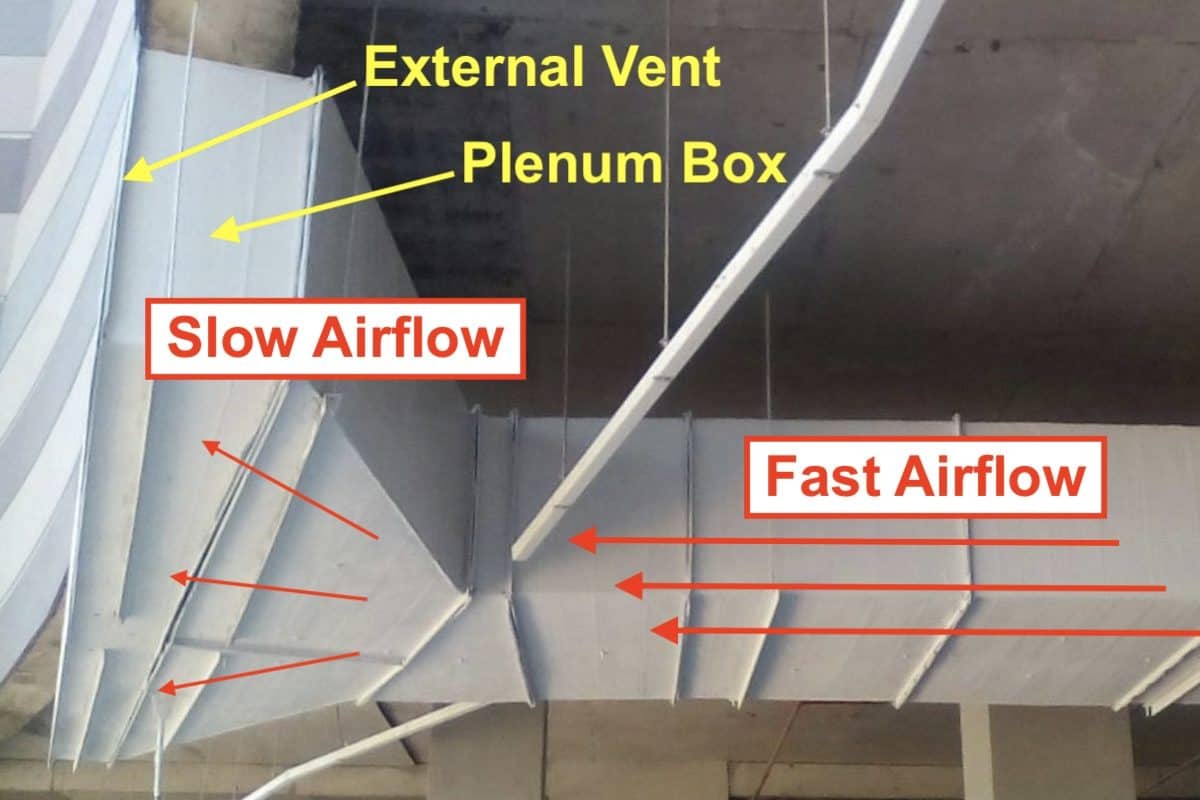
By allowing the air to travel in a much larger space, the velocity of the air can be reduced from around 1000 FPM to around 500 FPM. Hence, vent noise can be reduced.
Solution Two: Increase the Size of the Vent
A plenum box may sometimes not be enough to reduce the noise sufficiently if you have too small of a vent. Hence, you may need to increase the size of the vent.
If the noise is coming out from a supply air vent, then see my post Supply Air Diffuser Sizing Guide (Practical Selection) to learn how to properly size and select it.
If the noise is coming out from a return air vent, then see my post Return Air Grille Sizing Guide: CFM Chart & Calculation to learn how to properly calculate and size it.
Nonetheless, if the duct connecting to the vent is too small or you don’t have a plenum box behind the vent, increasing the vent size doesn’t help at all. The air will simply rush through the center of the vent, creating a loud noise.
But, if you increase the vent size along with installing a plenum box behind the vent, the velocity of the air will be reduced drastically. Hence, the noise will be reduced significantly.
Solution Three: Internally Insulate the Plenum Box or Return Duct
If you have a short return air duct, the fan noise will still be able to transmit out from the vent even when you have a plenum box and a big vent.
Hence, you need to internally insulate either the plenum box or the return duct.
Most people don’t realize that duct insulation can actually be installed on the inner surface of ducts. I’ve cover it alongside other types of duct insulation in my post 4 Types of Duct Insulations (with Specifications).
In HVAC projects, we always insulate the supply and return air duct sections that are connecting to the HVAC unit (air handlers). As a contract requirement, we often need to install at least 20ft (6m) of internal insulation for large air handlers in order to suppress noise to the minimum.
For you, probably 4-5ft (1.2-1.5m) of internal insulation is fine. The material used should be 1″ (25mm) thick fiberglass insulation with perforated aluminium foil. The density of the fiberglass should not be less than 2 lb/ft3 (32 kg/m3) and the thermal conductivity of the fiberglass should not be more than 0.24 btu.in/hr/sqft/°F (0.035 W/mK).
When your ducts have internal insulation, external insulation is not required anymore. However, you need to increase the size of your ducts by 1″ (25mm) on all sides to account for the internal insulation so that the net duct volume remains the same.
Remember that you must use perforated aluminium foil or metal sheet instead of a flat or solid one because we need the holes to be able to absorb fan noise.
Solution Four: Extend the Length of the Return Air Duct
Extending the length of your return air duct is a possible solution but not really practical because it involved a major change in either the location of the HVAC unit or the position of the return air vent.
If your return air duct has sufficient length, internal insulation may not be required. However, I would suggest you just go for the internal insulation method.
Solution Five: Insulate the Entire HVAC Unit
Wrapping a layer of 2″ (25mm) Rockwool insulations around your HVAC unit can effectively reduce noise thereby making your vent quieter.
In one of my previous projects, we have two large-capacity air handlers installed in a hall. However, the client was upset that the noise is too loud, at around 65 dB. Hence, we wrap a layer of 2″ (25mm) Rockwool insulation around each air handler and the noise was reduced to 59 dB.
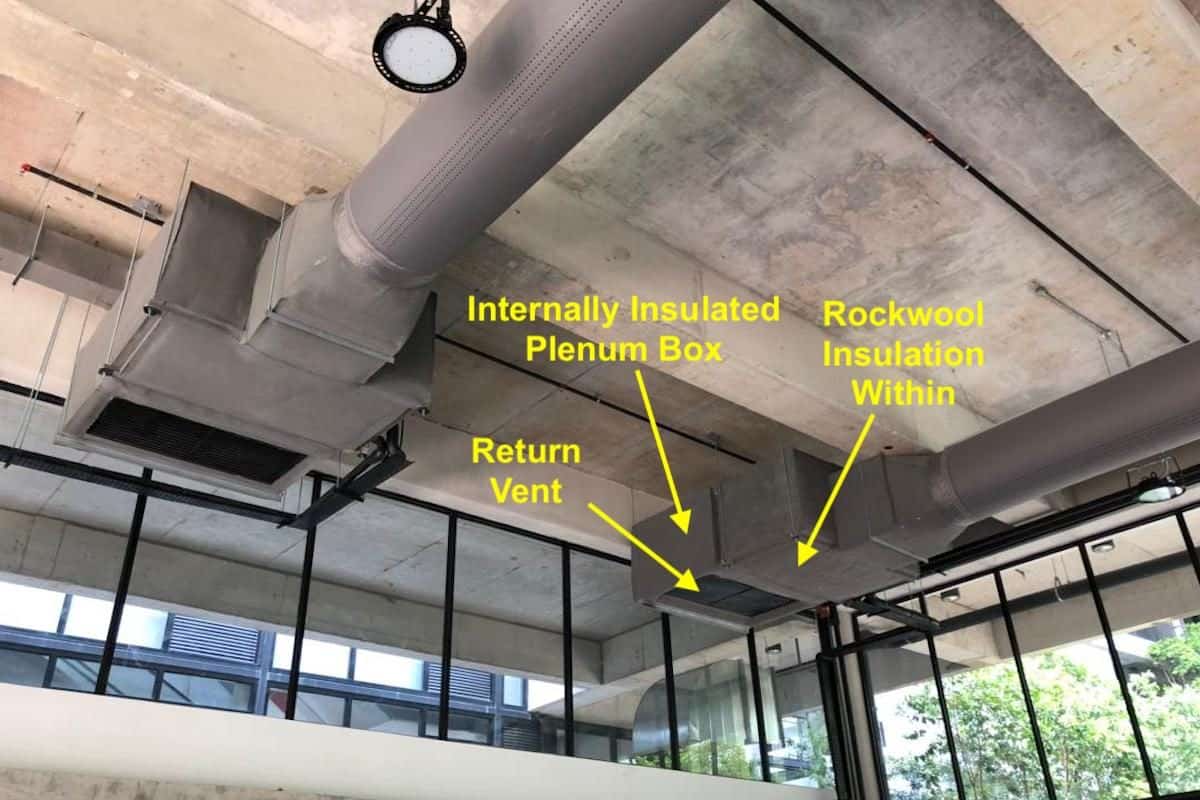
As you can see from the above photo, the entire air handler is wrapped with a layer of insulation. It is grey in color because we finish it off with a thin layer of polyethylene (PE) insulation for aesthetic purposes.
In addition, you can see that there is no return air duct but only a plenum box with a large return vent. Hence, we need to internally insulate the plenum box to suppress the noise transmission.
However, it is relatively difficult for you to do the same. But, it is a viable option when necessary.
Things You Shouldn’t Do When Addressing Vent Noise Issues
- Do not reduce fan speed through modification – Airflow is essential for the HVAC system to work properly. Too little airflow may reduce fan noise but it may also create new problems such as freezing and low pressure trip.
- Do not cover the vent to reduce noise – Your HVAC unit needs return air to be able to work properly. Insufficient return airflow may cause high fan motor amps and eventually trip.
- Do not remove the filter to reduce noise – Filters are needed to prevent dirt from trapping on the cooling coil where it is significantly harder to clean. Dirty coil can lead to insufficient cooling and low pressure trip problems.
Other Solutions to Try Reduce Vent Noise
- Realign the fan – Misaligned fan spins wobbly and create extra noise. Realigning the fan can help to reduce fan noise thereby reducing the noise coming out of the vent.
- Tighten the bolts and nuts – Rattling noise can sometimes due to loosen bolts and nuts in the HVAC unit itself, the duct or the vent. Simply tightening them may just solve your problem.
- Adjust the vent damper – Vents often come with a damper right behind it for you to adjust and balance the air. If you notice a whistling noise coming out of your vent, adjusting the vent damper by a little may just solve the problem.
Conclusion
Many resources on the internet don’t really tell you the root cause of a really noisy vent. If you can’t fix your noisy vents relatively easily, then you probably have some technical issues that need the solutions I suggested in this post.
A properly designed and installed HVAC system shouldn’t have a noisy vent. Manufacturers had already accounted for noise when designing their systems. Hence, if your noisy HVAC system is newly installed, you may seek compensation from the installer.
Lastly, consider my Mini Split (eBook) if you want to know how can you use Mini Split in your house. If you still have doubt or not feeling confident enough, feel free to consult me.
Consultation Service
Ask me for HVAC advice such as brand selection, best model, benefits, features, placement, duct size, grille size, how to design, design check, verification and other HVAC related queries.
If you have anything to add (or ask) about this topic, leave a comment down below!




